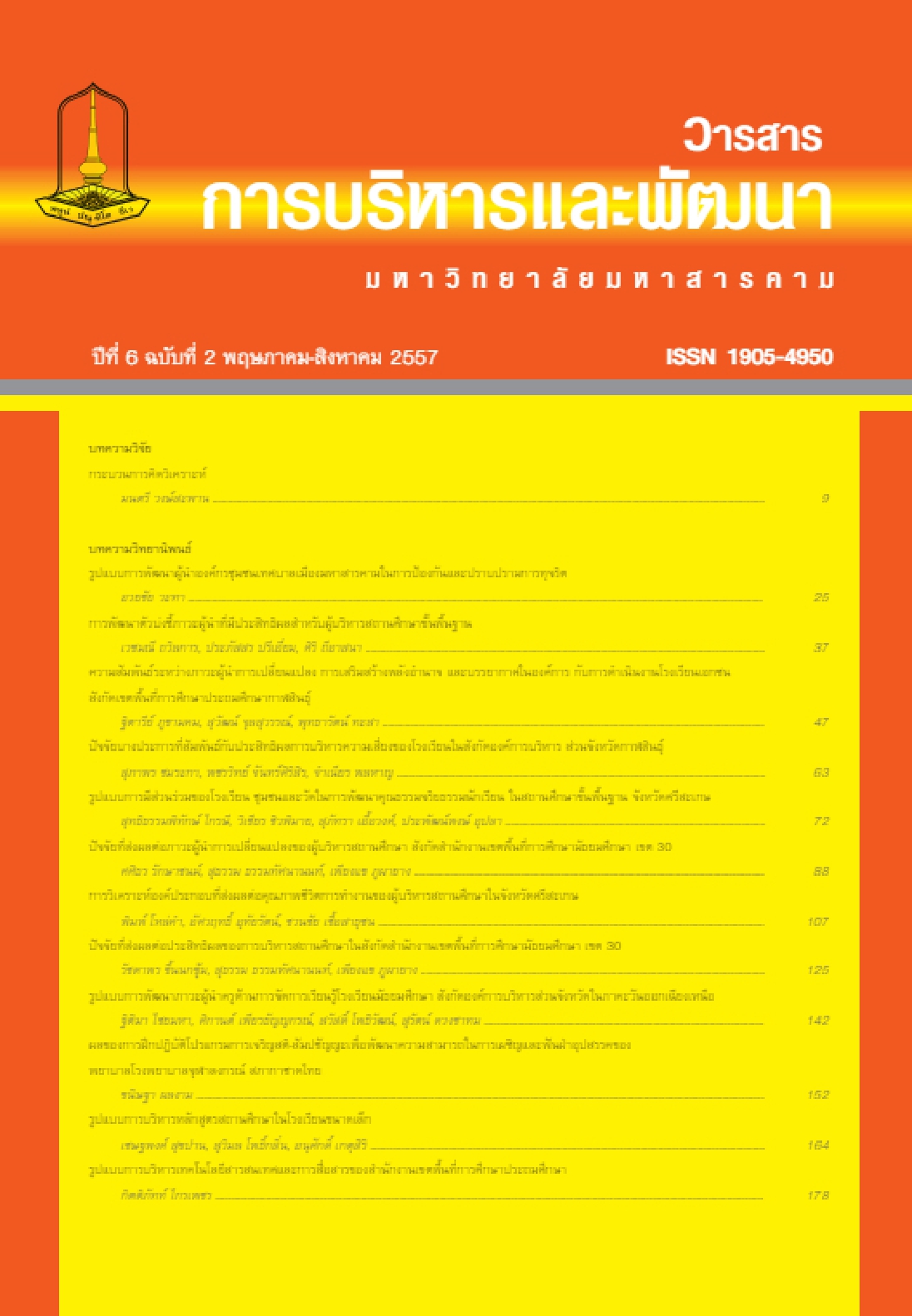The Development of Indicators of Effectiveness Leadership for Basic School Administrators
Main Article Content
Abstract
This research aimed to construct and develop indicators of Effectiveness Leadership for basic school administrators, and to examine the goodness of fit of the structural relationship model of Effectiveness Leadership indicators developed by the researcher with empirical data. The sample group for this study consisted of 395 administrators of basic schools in Thailand obtained through multi-stage sampling. The instrument used in collecting data for this study was a five-level rating scale questionnaire with 0.950 reliability and content validity of 0.60-1.00. The collected data were analyzed by using a computer software program.
Results of the study are as follows:1. Results of constructing and developing of the conceptual framework and indicators of Effectiveness Leadership for basic school administrators, this model consists of 4 major factors and 75 indicators as follows: 1) The major factor regarding Moral commitment and dedication to work consists of 20 indicators; 2) The main factor regarding Creativity and vision consists of 17 indicators; 3) The major factor regarding The ability to administrative, technical and academic Leadership consists of 27 indicators; and 4) The major factor regarding Management Effectiveness and satisfaction associated with the administration consists of 11 indicators.
2. The goodness of fit of the structural relationship model of Effectiveness Leadership indicators with the empirical data reveal that the model is in congruence with the empirical data (Chi-square = 66.38, df = 120, P = 0.99, GFI = 0.98, AGFI = 0.97, and RMSEA = 0.00).
Downloads
Article Details
References
Andrew J. DuBrin, R. Duane Ireland. Management & Organization, 2nd ed. Ohio:South- Westem Publishing, 1993.
Andrew J. DuBrin. Leadership. 4th ed. New York: Houghton Mifflin Company .2004.
Bartol, K., Martin, D., Tein, M., & Matthews, M. Management: A Pacific Rim Focus. New York: MeGraw – Hill, 1998.
Burstein, L. Oakes, J. and Guiton, G. Education indicators. Encyclopedia of Educational Research. New York: MacMillan, 1992.
Cave, M. Hanney, S. Henkel, M. and Kogan, M. The Use of Performance Indicators in Higher Education. London and Bristol: Pennsylvania, 1997.
Chris Roebuek. Effective Leadership. Washington. D.C.: American Management Association, 1999.
Donnelly, J. H., Gibson, J. L, & Ivancevich, J. M. Fundamental of Management. Texas: Business Pub, 1984.
DuBrin. A. J. & Ireland. R.D. Management and organization. New York: MeGraw – Hill, 1993.
DuBrin. A. J. Management and organization. New York: MeGraw – Hill, 2005.
Drath & Palus,: 25A leadership project, Reflective Human Action, 1994.
Fitz - Gibbon. Monitoring Education on Quality Indicators of Lifelong Learning. London: Cassell, 1996.
Fred C. Lunenburg & Allan C. Ornstein. Educational Administration Concepts and Practices. USA: Wadsworth, 2000.


